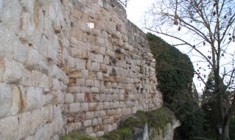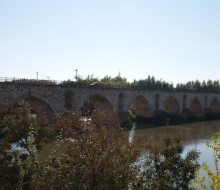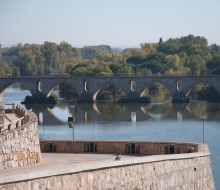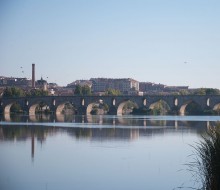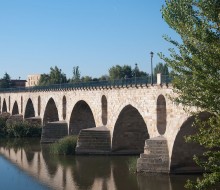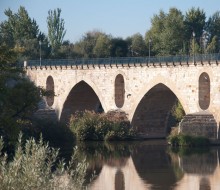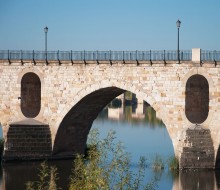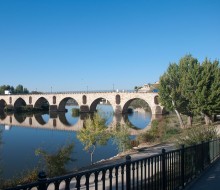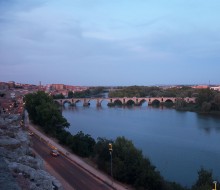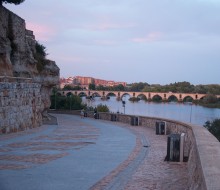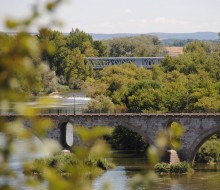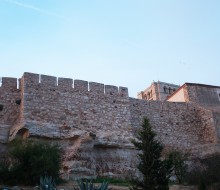Stone bridge
Zamora
Stone bridge
Zamora12th century
It was close to the Old Bridge or Olivares Bridge, but nowadays can still be seen its remains. It was rebuilt during the 13th and 14th centuries due to floods. This circumstance strengthened the urban importance of the so-called “Puente Nuevo” (New Bridge) today known as “Puente de Piedra” (Stone Bridge).
It was built in the 12th century, in 1167, but has been renovated several times. It links the downtown with neighborhoods located on the opposite side of the Douro River and is the oldest bridge preserved. For many centuries it was the only river-crossing point in the city.
It has 16 pointed arches which cross one of the widest areas of the Douro River. They have different drains and there can be seen triangular-plan cutwaters.
Drains above the columns were made according to Roman bridges. It had originally merlons too and two great defensive towers at its ends, being an extension of the wall of the third walled enclosure which went as far as there. It also had a chapel attached to the left side dedicated to the virgin called “Virgen de la Guía”, who is the patron saint of travelers. This image is nowadays housed in the Church "Santo Sepulcro" (Holy Sepulchre).
In the 20th century disappeared defensive elements. Its towers were dismantled and its battlements were removed from the parapets. The northern one was a triumphal arch which was rebuilt in 1614 after a great flood and the southern one was renovated in 1556 according to Renaissance style, adding a Flamenco spire. In 1712 it was rebuilt by Antonio de Teja and Pedro Durante.
It became popular for its vane representing the Fame and that Zamora people named "La Gobierna" as well as for different coats of arms, inscriptions and medallions. “La Gobierna” was preserved from destruction and is now exhibited in the Museum of Zamora.
GET DIRECTIONS
ROUTES
OPENING HOURS AND VISITS
Free entrance.
GENERAL INTEREST SERVICES
Tourist offices:
- Local tourist office: It is located at 5, Arias Gonzalo Square. Tel. +34 980 533 694
- Castilla y León tourist office: It is located at 1, Príncipe de Asturias Avenue. Tel. +34 980 531 845
- Provincial tourist office: It is located at Viriato Square. Tel. +34 980 534 047
Local police: Tel. +34 980 531 245
Civil Guard (police with responsibilities outside towns): Tel. +34 980 521 100
Emergency telephone numbers: 112
- Virgen de la Concha (Hospital): Tel. +34 980 548 212
Bus station: Tel. +34 980 521 281
Train station: Tel. +34 980 521 110
Taxi: Tel. +34 630 630 630
Civil defence: Tel. +34 980 536 190
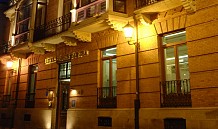
Hotel Horus
Zamora
El Hotel Horus, abierto en el año 2001, tiene un total de treinta y ocho habitaciones dobles que se dividen entre cuatro…
More info